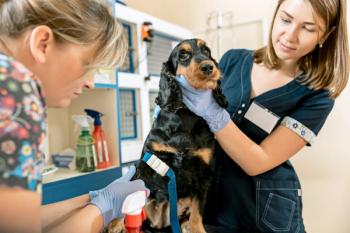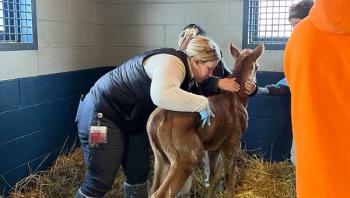
Association soup
National Report - Dr. John Parker has never thrown a haggis, but that didn't stop him from forming the Haggis-Throwing Veterinary Medical Association.
NATIONAL REPORT — John Parker, DVM, has never thrown a haggis, but that didn't stop him from forming the Haggis-Throwing Veterinary Medical Association.
The tongue-and-cheek name, as Parker says, is merely a Scottish cultural reference. The association, which has fewer than 50 members, is intended for veterinarians who are fond of caber tossing, bagpipes, proper pints and other enduring Scottish traditions. And while the association would prefer meeting at the Highland Games, it's certainly not devoid of veterinarian chatter.
"It has brought people who have common interests together in a social setting where we can talk about veterinary issues like new regulations and different medical issues, " says Parker, of Briarpointe Veterinary Clinic in Novi, Mich. "It's not purely a lets go out and have fun type of thing."
The Haggis-Throwing VMA, along with hundreds of other veterinary associations, were for years listed in the American Veterinary Medical Association's (AVMA) Membership Directory. Organizations interested in being acknowledged in the AVMA's directory were required to submit a general overview of the group to be vetted, but they were not officially recognized by AVMA.
AVMA has stopped printing directories and will not carry these listings over to its online directory, says AVMA spokesman Michael San Filippo. Additionally, San Filippo points out that these groups are not represented in the AVMA House of Delegates like some of the bigger groups, including the American Association of Avian Pathologists and the American Association of Bovine Practitioners.
In fact, a loose count of the aging AVMA directory displays more 475 national, state, local and special-interest veterinary associations. Many of these smaller groups act as loose umbrella organizations, pooling together experts who can provide guidance and insight when needed. Take for example the Association of Pigeon Veterinarians, which was formed in the early 1980s when the American Racing Pigeon Union gathered about 20 practicing vets for an annual meeting. Roger Harlin, DVM, current president of the pigeon association, says that while the group is not as active as it used to be, it can be called upon when pigeon-related issues arise.
"There was an avian influenza outbreak about 10 years ago, and the USDA wanted to put a ban on racing pigeons because they didn't want birds to be shipped over state lines," Harlin says. "But the association got together, compiled a lot of research and showed that pigeons don't get avian influenza. The USDA was trying to classify pigeons as poultry ... pigeons are a very different bird physiologically, so the group was able to convince the USDA that racing pigeons could still go on and not be any kind of threat."
Haggis and pigeons are by no means the only interests represented by the numerous organizations. There's the Lesbian and Gay Veterinary Medical Association, the Christian Veterinary Mission, the Association for Veterinary Informatics and the Association of Reptilian and Amphibian Veterinarians, to name a few. Among the more recreation-oriented associations are the Flying Veterinarians Association and the Veterinary Amateur Radio Operators group, both of which are presided over by Richard Rossman, DVM, of Glenview, Il.-based Glen Oak Dog and Cat Hospital.
Rossman says both groups have more than 300 members, and while they don't have annual meetings, they arrange get-togethers at the AVMA and AAHA annual meetings. As would be expected, members of the Veterinary Amateur Radio Operators are fond of meeting over the airwaves.
"The Veterinary Amateur Radio operators still has a net [an over-the-air meeting] that meets every Sunday morning on the frequency of 14.345 mHz," Rossman says. "We use shortwave to talk to each other, and it's all over the world, believe it or not. We talk about different cases, several pathologists are members of the net and members of the public come on to ask us questions about their own pets, which we welcome them to do."
If there isn't an association for a specific hobby or specialty, vets shouldn't shy away from launching their own. Creating the Haggis-Throwing group was remarkably simple, says Parker, and only required drafting a set of bylaws and a mission statement. Some organizations opt to charge a membership fee, while others waive it or charge fees to cover basic costs, such as printing marketing material.
The advent of social networking has made it easier for like-minded people, and vets, to get in touch with one another, with Web sites like Facebook serving as useful tools for building up memberships. And with the AVMA ditching its directory and association listings for the online world, these Web 2.0 tools may be the easiest way for vets to collaborate.
Or they can just tune in to frequency 14.345 on Sunday mornings.
Newsletter
From exam room tips to practice management insights, get trusted veterinary news delivered straight to your inbox—subscribe to dvm360.




